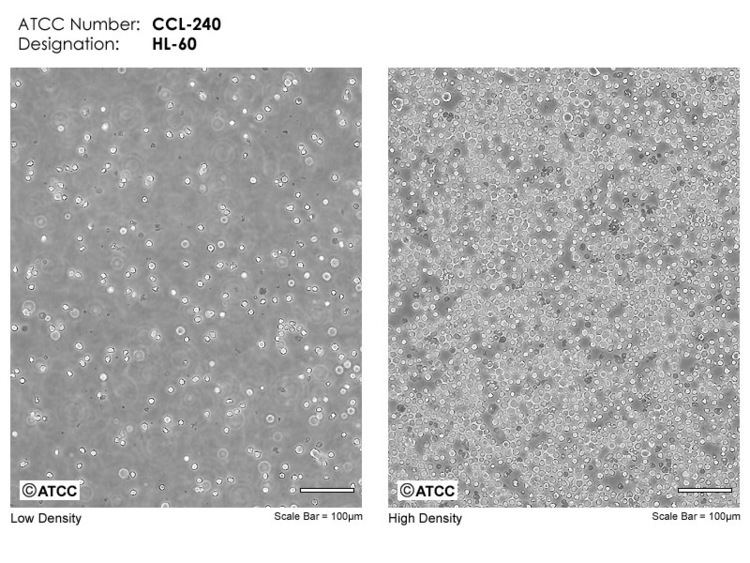 | ||
remont przyczepy hl60 11
The HL-60 (Human promyelocytic leukemia cells) cell line has been used for laboratory research on how certain kinds of blood cells are formed. HL-60 proliferates continuously in suspension culture in nutrient and antibiotic chemicals. The doubling time is about 36–48 hours. The cell line was derived from a 36-year-old woman with acute promyelocytic leukemia at MD Anderson Cancer Center. HL-60 cells are predominantly a neutrophilic promyelocyte (precursor).
Proliferation of HL-60 cells occurs through the transferrin and insulin receptors, which are expressed on cell surface. The requirement for insulin and transferrin is absolute, as HL-60 proliferation immediately ceases if either of these compounds is removed from the serum-free culture media. With this line, differentiation to mature granulocytes can be induced by compounds such as dimethyl sulfoxide (DMSO), or retinoic acid. Other compounds like 1,25-dihydroxyvitamin D3, 12-O-tetradecanoylphorbol-13-acetate (TPA) and GM-CSF can induce HL-60 to differentiate to monocytic, macrophage-like and eosinophil phenotypes, respectively.
The HL-60 cultured cell line provides a continuous source of human cells for studying the molecular events of myeloid differentiation and the effects of physiologic, pharmacologic, and virologic elements on this process. HL-60 cell model was used to study the effect of DNA topoisomerase (topo) IIα and IIβ on differentiation and apoptosis of cells and is especially useful in dielectrophoresis studies, which require an aqueous environment with suspended and round cells. Furthermore, these cells have been used in order to investigate whether intracellular calcium plays a role in caspase activation induced by reactive oxygen species.
